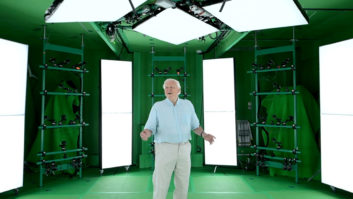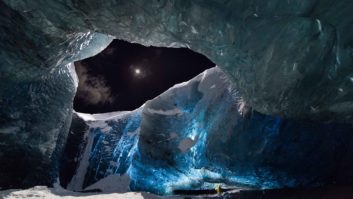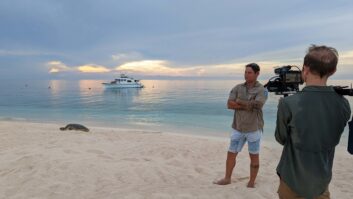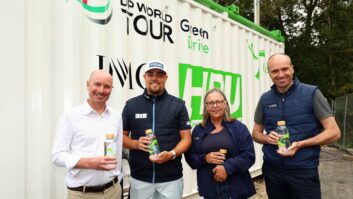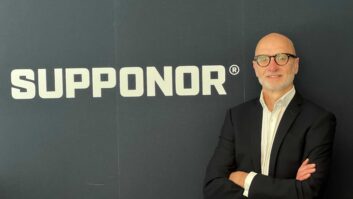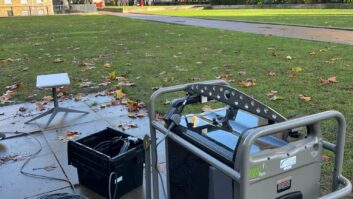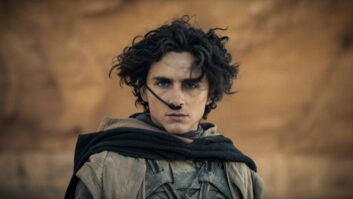In its latest natural history blockbuster series, the BBC’s Natural History Unit delves back into the secret, unseen lives of plants. The Green Planet uses new filming technology to take the audience to the highest branches and the lowest fauna. During the series, Sir David Attenborough visits trees that care for each other, plants that hunt animals and a plant with the most vicious defences in the world.
The series’ executive producer Mike Gunton describes The Green Planet as Planet Earth for plants, with all the same ambitions and same scale, but this series discovers a part of the natural world rarely looked at. “It is perhaps the most important part of the natural world and one that we should look at, but it’s very, very difficult to do for lots of reasons,” he tells TVBEurope, “partly because we are plant blind, we don’t really realise that this world goes on. This extraordinary parallel universe exists in a timeframe that we can’t comprehend.
“The aim of the series is to take the viewer through effectively a kind of time portal, rather like we’re going through the wardrobe into Narnia,” Gunton continues. “You go into a new world where there’s this parallel universe and then start to experience it from the perspective of the living things, which are plants.”
In order to create this groundbreaking series, the NHU sought out brand new technology to help them enter the plants’ timsecale. The Unit first used time lapse 25 years ago for The Secret Life of Plants, but the technology has remained pretty much unchanged in the years since. The team wanted to find a way to enter the world which felt much more contemporary, modern and fluid, including being able to take the camera off the tripod and move it more dynamically around the plant world.
This led to producer/director Paul Williams checking out Kickstarter. “I came across a link to a short clip, which had some footage of carnivorous plants,” he explains. “The guy who shot it had the camera moving around in a really fluid way. I thought, ‘wow, that really feels fresh and different’, and I managed to find the chap who shot it. It turned out that he was an ex-military engineer living in the United States, and he’d been inspired by all of our previous series.”
At the time, Chris Field was working as a telecoms manager, and was creating a robotic camera system in his basement as a hobby. “Mike, myself and the rest of the team were so amazed by what Chris was doing that we hired him onto the team for three years,” states Williams. “He quit his telecoms job and worked with the BBC’s engineers. Chris came over to the UK and kitted out all of our studios with all of his high tech robots and now we have an army of these robots.”
The team also worked with Field to develop new technology to film plants in their natural habitat. Working alongside BBC engineers they took their camera rig, which is named Otto, and re-engineered it into a field robot that they christened the Triffid after John Wyndham’s science fiction book. “We called it the Triffid because when you see plants moving and fighting, it is very science fiction,” states Williams. “It’s essentially a long extended slider with a long arm on it, but it can fly anywhere we programme it to go.”
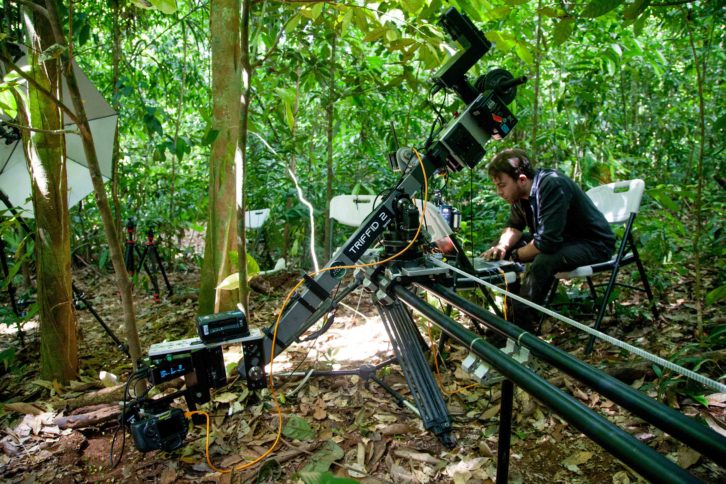
Using the system the production team were able to film plants in the field, not only in time lapse, but in real time, exploring their world from a big scale all the way to a macro scale. “That allowed us to do something that we’re very excited about, which is create these long developing shots,” Williams continues. “In the tropical episode, we have a shot which is three and a half minutes long, and it’s a single shot! It follows Leafcutter ants from the tree that they are eating all the way to their underground nest going along the ground and under roots. Using this technology, we’re able to build longer and longer shots and that allows us to take the audience even further into this parallel world. Sometimes the Triffid allowed us to transition from real time into time lapse over a long developing shot.”
“One of the things that is slightly mind blowing about this is that the camera is moving in the audience’s time,” adds Gunton. “It’s tracking as if we were filming in our world, but what’s going on inside the image is in time lapse, so it is like a moving portal. It’s as if you strap some kind of weird visualising goggles on your head and you’re moving around. But as you move around, what’s going on inside is in their universe. It’s not just a gimmick, it’s very, very important to the narrative.”
The Leafcutter ants sequence was shot over three weeks and is comprised of 7,000 individual still images, with each one plotted very carefully. “We have to be incredibly precise with how we programme and use the technology,” says Williams. “We have a shot of a glowing tree in a rainforest which has been digested by this bioluminescent fungus and the whole tree is glowing green. In order to get that shot, we used a cable dolly which flies through the forest in real time. Where that cable dolly shot ends, we then put a time lapse camera in its place to pick up the shot. It’s spanning from real time into the time lapse world and it draws the audience in, but it allows us to be much more creative with how we use the cameras.”
“That sequence is the pinnacle of photographic, creative and engineering,” agrees Gunton. “Those three things have been taken to the max.”
You can read more of TVBEurope’s interview with the team behind The Green Planet in our January/February 2022 issue.
